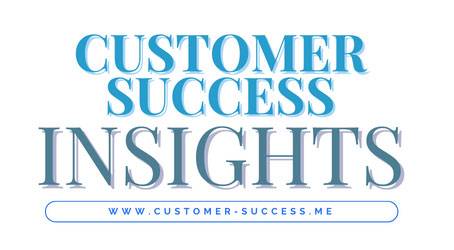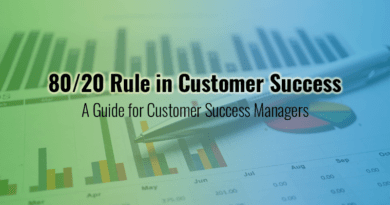Customer Feedback
The Importance of Customer Feedback in Business Growth and Development
By: Mohammed Alqaq
In the world of business, since ever, one constant remains: the customer is king. For companies to thrive and grow, understanding their customers’ experiences, needs, and expectations is critical. This is where customer feedback comes into play. It refers to the insights, issues, and suggestions shared by clients about their experiences with a company’s products, services, or overall customer service.
Customer feedback is not just a tool for improvement; it is a goldmine of insights that can drive strategic business decisions. By actively listening to your customers’ voices, you can identify what aspects of your business excel and which areas need enhancement. This process allows businesses to fine-tune their operations, products, and services to better align with customer needs and expectations.
Table of Contents
Moreover, customer feedback plays a significant role in business growth. Word of mouth can be a powerful marketing tool, and positive customer feedback can help attract new customers. It serves as a testament to the quality of your products or services, increasing the credibility and reliability of your business. Simultaneously, constructive criticism offers an opportunity to improve your offerings and customer service. This continuous cycle of feedback and improvement can lead to customer trust and loyalty, a vital factor in business growth.
However, ignoring or neglecting customer feedback can have serious repercussions. It can lead to a decrease in customer satisfaction levels, which can subsequently damage your business’s reputation. This could potentially lead to a decline in customer retention and negatively impact your business’s growth and profitability.
To effectively collect customer feedback, businesses should adopt a multi-channel approach. Surveys are a common and efficient way to gather customer feedback. They can be sent via email or conducted through the company’s website. Encouraging customers to leave online reviews on platforms like Google or Yelp can also provide valuable feedback. Moreover, social media platforms offer a direct line of communication with customers, making them a powerful tool for collecting feedback. With the rise of digital technology, creating a user-friendly feedback form on your company’s website or app can make the process easier and more accessible for your customers.
Customer feedback is an invaluable tool that businesses cannot afford to ignore. Its importance lies in its ability to guide business decisions, improve products and services, and impact business growth positively. By understanding and responding to customer needs and expectations, businesses can create a customer-centric culture that drives growth and success.
“Unless you have 100% customer satisfaction, you must improve.”
Horst Schulze, CEO of the Capella Hotel group and Co-Founder of the Ritz-Carlton Hotel
How to Encourage Customer Feedback: Overcoming Obstacles and Building Trust
In the business world, customer feedback is a vital tool that can shape a company’s products, services, and overall operations. However, it is not always easy to obtain. Many customers might be hesitant to share their feedback due to various reasons, including company policies, security concerns, or lack of communication. In this article, we will explore strategies for engaging these silent customers and encouraging them to share their valuable insights.
Understanding the Barriers
The first step towards encouraging customer feedback is understanding why customers might be hesitant to share their opinions. For some, it might be due to their company’s policy prohibiting them from giving feedback to vendors. Others might be concerned about the privacy and security of their data. Moreover, some customers might not feel encouraged to share feedback due to lack of communication or the belief that their opinions would not make a difference.
Building Trust and Ensuring Privacy
Addressing these concerns begins with building trust with your customers. This involves ensuring that their data is secure and that their privacy is protected. Be transparent about your data handling practices and reassure them that their information will not be misused. If a customer’s company policy prohibits them from giving feedback, respect their boundaries and find alternative ways to gauge their satisfaction, such as observing their usage patterns.
Enhancing Communication
Communication plays a crucial role in encouraging feedback. Regularly check in with your customers to understand their experiences and concerns. Make sure to communicate that their feedback is valued and will be used to improve their experience. This can be done through personalized emails, phone calls, or even face-to-face meetings.
Making Feedback Easy
Customers are more likely to share their feedback if the process is simple and straightforward. To this end, provide multiple avenues for feedback that are easily accessible to your customers. This could be through a feedback form on your website, a quick survey sent via email, or even a comments section on your social media posts.
Showing Impact
Show your customers that their feedback makes a difference. Share how their opinions have led to real changes in your business. This not only encourages more feedback but also builds a stronger relationship with your customers, as they see their voice is acknowledged and appreciated.
While it might be challenging to encourage customer feedback, it is not an impossible task. By understanding and addressing your customers’ concerns, enhancing communication, making the feedback process easy, and showing the impact of their opinions, you can create an environment where customers feel comfortable and encouraged to share their insights. This, in turn, can lead to valuable feedback that drives your business growth and success.
“A satisfied customer is the best business strategy of all.”
— Michael LeBoeuf, business author
Customer Feedback Collection: Timing and Frequency
When it comes to collecting customer feedback, timing and frequency are crucial factors to consider. Here are some best practices:
Immediately After Interactions: One of the most effective times to solicit feedback is immediately after a customer has interacted with your product or service. This could be after a purchase, a customer service call, or use of your product or service. The customer’s experience is fresh in their mind, making their feedback more accurate and specific.
Consistent Follow-ups: Consistency is key when it comes to feedback collection. Regularly scheduled surveys, such as quarterly or bi-annual, can help track changes in customer satisfaction over time. It also gives customers a predictable pattern, so they know when to expect a feedback request.
During Product/Service Updates: If you’ve recently updated a product or service based on previous feedback, it’s a good idea to reach out to customers and ask for their thoughts on the changes. This not only shows that you value their input but also allows you to gauge the effectiveness of your improvements.
Avoid Over-Surveying: While regular feedback is valuable, it’s important to avoid over-surveying your customers. Too frequent requests can lead to survey fatigue, causing response rates to drop and possibly annoying customers. Be respectful of your customers’ time and ensure that each feedback request is purposeful and valuable.
Remember, every customer interaction is an opportunity for feedback. The key is to strike a balance between staying informed about your customers’ experiences and respecting their time and input.
Responding to Customer Feedback
Whether positive or negative, customer feedback is a valuable resource for any business. How you respond can shape the customer’s perception of your company and influence future interactions. Here are some best practices for responding to customer feedback:
Acknowledge and Thank the Customer: Always begin your response by thanking the customer for their feedback. This shows that you value their opinion and appreciate the time they took to provide it.
Be Empathetic and Understanding: If the feedback is negative, acknowledge the customer’s feelings and show empathy. This can help defuse tense situations and let the customer know that their feelings are valid and understood.
Address Specific Points: Address all the points raised by the customer. If they have made several points, respond to each one individually. This shows that you have read and understood their feedback in detail.
Apologize When Necessary: If the feedback is negative, don’t shy away from apologizing. Even if the issue was not your company’s fault, an apology can go a long way in making the customer feel heard and respected.
Offer a Solution: For negative feedback, always try to offer a solution or rectify the problem. This might mean providing a refund, replacing a product, or finding another way to make up for the customer’s negative experience.
Frame Positive Feedback as Encouragement: For positive feedback, express your gratitude and let the customer know that their satisfaction is your top priority. This kind of response encourages customers to continue engaging with your brand.
Ask for More Details if Needed: If the feedback is unclear or you need more information to address the problem, don’t hesitate to ask for more details.
Follow Up: After responding to the feedback, make sure to follow up to ensure that the customer is satisfied with your response and the steps you’ve taken to address their feedback.
Remember, your responses to customer feedback should be timely, personalized, and genuine. By taking the time to respond thoughtfully, you can build stronger relationships with your customers, improve your products or services, and create a better customer experience.
Leveraging Customer Feedback for Business Growth and Future Roadmap
Customer feedback is a treasure trove of insights that can fuel business growth and shape your future roadmap. By actively soliciting, analysing, and acting on customer feedback, businesses can drive growth that aligns with their customers’ needs and expectations. Leveraging customer feedback can provide numerous benefits, and here’s how you can leverage it effectively:
Identifying Strengths and Weaknesses: Customer feedback can help identify the strengths and weaknesses of your business. Positive feedback can highlight what you’re doing well, while negative feedback can reveal areas for improvement. This can guide your efforts to improve your products, services, or customer experience.
Innovation and Product Development: Customer feedback can often serve as a source of innovative ideas. Customers, being the end-users of your product or service, can provide practical suggestions on how to improve it or even propose new features they’d like to see. This can be immensely helpful when planning new product launches or updates.
Prioritizing Product Features: Based on customer feedback, you can gauge which features or services are most valued by your customers. This can help prioritize where to invest your resources for further development.
Improving Customer Satisfaction: By acting on customer feedback, you can enhance customer satisfaction, leading to higher customer retention rates. Satisfied customers are also more likely to recommend your business to others, helping attract new customers.
Informing Business Strategy: Customer feedback can reveal trends and patterns that can inform your business strategy. For example, if you notice a recurring issue in feedback, it may indicate a systemic problem that needs to be addressed at the strategic level.
Remember, to truly leverage customer feedback, you need to actively solicit it, carefully analyse it, and, most importantly, act on it. This continuous loop of feedback and improvement can drive your business growth and help shape a future roadmap that aligns with your customers’ needs and expectations.
Author

Mohammed Alqaq
The Founder of Customer Success Middle East. Mohammed has been instrumental in helping professionals realize value and achieve their desired outcomes through an extraordinary success journey. Throughout his 18-year journey in customer-facing roles, Mohammed has had the privilege of managing international teams and fostering exceptional relationships with customers worldwide. In 2023, he was recognized as one of the ‘Top 100 Customer Success Strategists,’ and was nominated as one of the ‘Most Creative Customer Success Leaders in 2023 & 2024.’ These recognition's represent not only personal milestones but also a testament to his dedication to redefining customer success. His journey in this field is not just about achieving results, but also about creating meaningful, long-lasting experiences that drive business growth.

Stay ahead of the game.
Sign up to the newsletter.
Get all the hottest customer success conversations and talking points landing in your inbox once a month, every month.





Pingback: Customer Success - Methodology or Philosophy